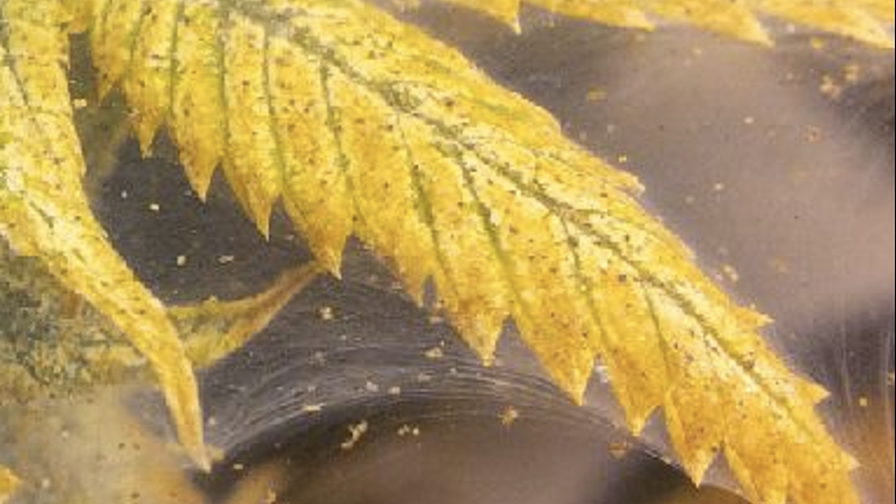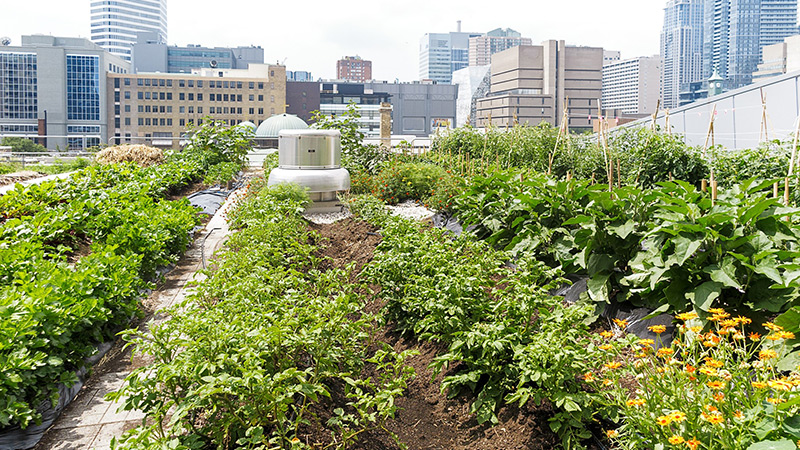When to Change Direction With Cannabis Cultivation, and When to Stay the Course

Spider mite damage in cannabis; Photo: Ryan Douglas
Production planning allows growers to make the most efficient use of their cultivation space. By carefully scheduling cultivation tasks and harvest dates, a grower can keep their facility producing cannabis year-round. Proper scheduling helps cultivation businesses meet their production goals and fulfill their promises to investors, regulators, and stakeholders.
The most successful cannabis cultivation teams strictly follow their production plans, and only under certain circumstances do they modify them. Unnecessarily tinkering with a production schedule can result in crop delays, production bottlenecks, and inferior products.
Here are three of the most common circumstances that would warrant a change in direction:
Disease
A disease is anything that prevents a plant from performing to its maximum potential. Diseases are caused by infectious pathogens such as fungi, bacteria, and viruses.
Bacteria and viruses can be difficult to control in commercial cannabis operations, but their occurrence is rare.
Diseases caused by fungi are much more common among cannabis growers. The two most damaging fungal diseases are botrytis and powdery mildew.
Insects
Plant-feeding insects can damage cannabis in several ways. Insects with piercing-sucking mouthparts — like thrips, aphids, and spider mites — damage plants by sucking sap from plant tissue. Like a mosquito extracting blood from a vein, these insects tap into the plant’s leaves, stems, and roots to feed off the nutrients flowing throughout the plant.
Insects with chewing mouthparts, such as caterpillars and grasshoppers, damage plants by consuming plant tissue. Although much larger than piercing-sucking insects, chewing insects are usually green and blend seamlessly into the plant canopy, allowing them to go undetected for long periods.
Insects also act as vectors of bacterial and viral infections between plants. The same mouthparts that pierce plant veins and extract sap can also disperse pathogens.
Hermaphroditic plants
Most cannabis plants are dioecious, meaning there are distinct male and female plants. Commercial cannabis growers only cultivate female plants unless they’re involved in breeding or seed production. Once a cannabis flower is pollinated, it changes the entire physiology of the plant.
Occasionally, cannabis plants are monoecious, meaning there are male and female flowers on the same plant.
Also referred to as hermaphroditism, this can be caused by genetic influences or extreme growing conditions. As a survival mechanism under stressful conditions, a female plant will grow male flowers to pollinate itself.
If this happens in response to a missed irrigation or a chronically hot grow room, one plant can end up pollinating thousands of female plants.
Changing Direction
Plant disease outbreaks, insect infestations, and hermaphroditic plants warrant a change in direction for a business’s production plan.
Most of the tools for fighting these issues are preventative measures. Once they have reached damaging levels, the grower is justified in straying from the production schedule to mitigate risks to the rest of the facility, as well as the future of the cultivation program.
For any of the above problems, growers should change direction by taking the following measures:
- 1st action: Scout the crop daily and cut off affected leaves and flowers.
- 2nd action: Scout the crop daily and cull affected plants.
- 3rd action: Pull the crop early.
The first two steps will result in decreased yields, while the third option will likely result in a crop loss.
Some extraction technologies can pull oil out of a cannabis flower while leaving mold, insects, and seeds behind, but even with this technology as a fallback option, leaving infected plants to finish growing until their scheduled harvest date is a risky strategy.
It’s usually safer to pull a crop early, concentrate on sterilizing the grow area, and then keep a laser focus on preventing the same problem with the next crop.
What Doesn’t Warrant a Change in Direction?
While the above three issues merit a change of plans, it’s common for start-ups to change direction over much less. Unnecessary changes during production can shock plants, delay production, and result in non-compliant product.
Young growers are more likely to make abrupt changes during a crop cycle, while more experienced growers have the focus and discipline to stay the course.
Start-ups that unnecessarily modify their cultivation plan usually do so for one of the following reasons:
- Staff changes
- Vendors suggesting new stuff
- Something that somebody read about last night on the Internet
If it’s not damaged, don’t fix it. Production changes that don’t address an immediate threat should not be implemented in the middle of a crop cycle. They should be safely trialed under the watchful eye of the R&D team. If shown to benefit the grower, these changes should be slowly introduced to the cultivation program in a controlled manner.
The best cannabis cultivation businesses develop a rock-solid production plan and only pivot when there is a disease, insect, or pollination threat. Otherwise, implementing new ideas should wait until the business is fully operational and thriving.










